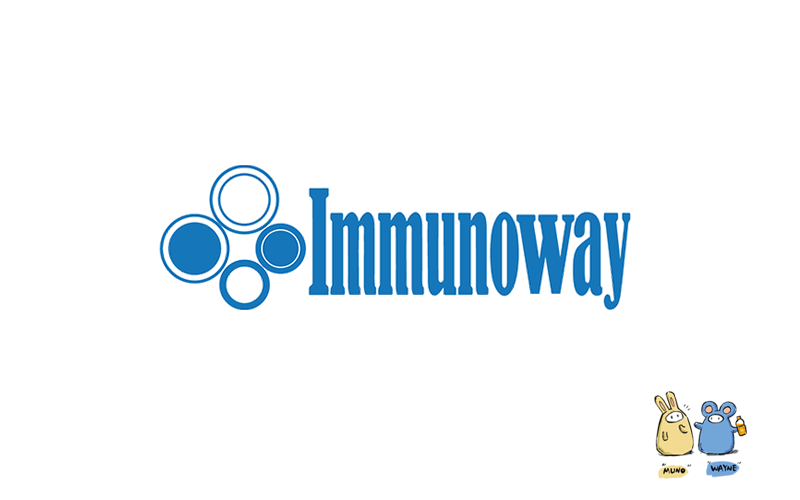
Catalog: YN2231
Size
Price
Status
Qty.
200μL
$450.00
In stock
0
100μL
$280.00
In stock
0
40μL
$150.00
In stock
0
Add to cart


Collected


Collect
Main Information
Target
BOC
Host Species
Rabbit
Reactivity
Human, Mouse
Applications
WB, ELISA
MW
122kD (Observed)
Conjugate/Modification
Unmodified
Detailed Information
Recommended Dilution Ratio
WB 1:500-2000; ELISA 1:5000-20000
Formulation
Liquid in PBS containing 50% glycerol,0.5% BSA and 0.02% sodium azide.
Specificity
BOC Polyclonal Antibody detects endogenous levels of protein.
Purification
The antibody was affinity-purified from rabbit antiserum by affinity-chromatography using epitope-specific immunogen.
Storage
-15°C to -25°C/1 year(Do not lower than -25°C)
Concentration
1 mg/ml
MW(Observed)
122kD
Modification
Unmodified
Clonality
Polyclonal
Isotype
IgG
Related Products
Antigen&Target Information
Immunogen:
Synthesized peptide derived from human protein . at AA range: 630-710
show all
Specificity:
BOC Polyclonal Antibody detects endogenous levels of protein.
show all
Gene Name:
BOC UNQ604/PRO1190
show all
Protein Name:
Brother of CDO (Protein BOC)
show all
Background:
The protein encoded by this gene is a member of the immunoglobulin/fibronectin type III repeat family. It is a component of a cell-surface receptor complex that mediates cell-cell interactions between muscle precursor cells, and promotes myogenic differentiation. Alternative splicing results in multiple transcript variants encoding different isoforms. [provided by RefSeq, Sep 2014],
show all
Function:
Function:Component of a cell-surface receptor complex that mediates cell-cell interactions between muscle precursor cells. Promotes differentiation of myogenic cells.,miscellaneous:The C-terminal cytoplasmic domain is not required for the stimuation of myogenesis.,PTM:N-glycosylated.,similarity:Contains 3 fibronectin type-III domains.,similarity:Contains 4 Ig-like C2-type (immunoglobulin-like) domains.,subcellular location:Enriched at sites of cell-cell contact.,subunit:Part of a complex that contains BOC, CDON, NEO1, cadherins and CTNNB1. Interacts with NTN3 (By similarity). Interacts with CDH2 and CTNNB1. Interacts with CDH15 only during the early stages of myoblast differentiation.,tissue specificity:Detected in skeletal muscle, heart, thymus, kidney and small intestine. Detected at lower levels in brain, placenta, lung and colon mucosa.,
show all
Cellular Localization:
Cell membrane ; Single-pass type I membrane protein . Enriched at sites of cell-cell contact.
show all
Tissue Expression:
Detected in skeletal muscle, heart, thymus, kidney and small intestine. Detected at lower levels in brain, placenta, lung and colon mucosa.
show all
Research Areas:
>>Hedgehog signaling pathway ;
>>Axon guidance
>>Axon guidance
show all
Signaling Pathway
Reference Citation({{totalcount}})
Catalog: YN2231
Size
Price
Status
Qty.
200μL
$450.00
In stock
0
100μL
$280.00
In stock
0
40μL
$150.00
In stock
0
Add to cart


Collected


Collect
Recently Viewed Products
Clear allPRODUCTS
CUSTOMIZED
ABOUT US
Toggle night Mode
{{pinfoXq.title || ''}}
Catalog: {{pinfoXq.catalog || ''}}
Filter:
All
{{item.name}}
{{pinfo.title}}
-{{pinfo.catalog}}
Main Information
Target
{{pinfo.target}}
Reactivity
{{pinfo.react}}
Applications
{{pinfo.applicat}}
Conjugate/Modification
{{pinfo.coupling}}/{{pinfo.modific}}
MW (kDa)
{{pinfo.mwcalc}}
Host Species
{{pinfo.hostspec}}
Isotype
{{pinfo.isotype}}
Product {{index}}/{{pcount}}
Prev
Next
{{pvTitle}}
Scroll wheel zooms the picture
{{pvDescr}}



















